 Open Access
Open Access
ARTICLE
End-To-End Encryption Enabled Lightweight Mutual Authentication Scheme for Resource Constrained IoT Network
1 Department of Computer Engineering, Balochistan University of Information Technology, Engineering and Management Sciences, Quetta, 87300, Pakistan
2 Computer Engineering Section Malaysian Institute of Technology, Universiti Kuala Lumpur, Kuala Lumpur, 50250, Malaysia
3 Electrical Engineering Section, Universiti Kuala Lumpur, British Malaysian Institute, Salengor, 53100, Malaysia
4 Electrical Engineering Department, Mehran University, Khairpur-Mirs, 76062, Pakistan
5 Department of Mathematics, College of Science Al-Zulfi, Majmaah University, Al-Majmaah, 11952, Saudi Arabia
* Corresponding Authors: Shafi Ullah. Email: ; Kushsairy Kadir. Email:
Computers, Materials & Continua 2025, 82(2), 3223-3249. https://doi.org/10.32604/cmc.2024.054676
Received 04 June 2024; Accepted 14 September 2024; Issue published 17 February 2025
Abstract
Machine-to-machine (M2M) communication networks consist of resource-constrained autonomous devices, also known as autonomous Internet of things (IoTs) or machine-type communication devices (MTCDs) which act as a backbone for Industrial IoT, smart cities, and other autonomous systems. Due to the limited computing and memory capacity, these devices cannot maintain strong security if conventional security methods are applied such as heavy encryption. This article proposed a novel lightweight mutual authentication scheme including elliptic curve cryptography (ECC) driven end-to-end encryption through curve25519 such as (i): efficient end-to-end encrypted communication with pre-calculation strategy using curve25519; and (ii): elliptic curve Diffie-Hellman (ECDH) based mutual authentication technique through a novel lightweight hash function. The proposed scheme attempts to efficiently counter all known perception layer security threats. Moreover, the pre-calculated key generation strategy resulted in cost-effective encryption with 192-bit curve security. It showed comparative efficiency in key strength, and curve strength compared with similar authentication schemes in terms of computational and memory cost, communication performance and encryption robustness.Keywords
Resource-constrained MTCDs also known as autonomous IoT devices, are inexpensive, tiny, and autonomous, feasible to operate in environments where no or little human intervention is required. There are approx. 5 billion such devices are connected to wireless sensor networks (WSN), with 48% of the population using the internet and the amount is expected to reach 50 billion by 2025 [1–4]. These devices are heterogeneous, resource-constrained, and communicate in autonomously without human intervention such as monitoring events, synchronous data sharing, communicating remote instructions, autonomous driving assistance, environmental and security surveillance, smart cities and industrial IoTs are the main drivers of autonomous devices.
IoT devices lack the processing power and memory to function remotely and independently. Instead, they rely on external security solutions as they are unable to implement standard security protocols whereas the external security is embedded via software-based protocols. Additionally, these devices operate securely in an environment where every device must be a trusted entity to ensure security with optimal performance. Many experts established such trust by authenticating all devices within the network. However, the authentication schemes lack cost efficiency in performance and fail to acquire robust security against many identified security threats, as presented in Table 1.
This research proposes a lightweight mutual authentication scheme with a pre-calculation strategy to address resilient security and efficient performance. Moreover, the scheme pioneered the following novel functionalities:
1) The lightweight ash function applied one of the fastest curves “Curve25519” with a pre-calculated reference-list strategy where we assigned unique curve points to every American standard code for information interchange (ASCII) character through GNU (collection of freeware application used s an operating system) multiple precision (GMP) library. It performed efficiently in acquiring less code size read only memory and occupying less random-access memory.
2) ECC based 192-bit curve security is achieved through lightweight hash function for an 8-bit CPU based IoT devices.
3) Due to end-to-end encryption, the proposed scheme can work with IoT devices through all data transmission protocols such as local area network (LAN), wide area network (WAN), long term-evaluation (LTE), 3rd generation partnership project (3GPP), long range wide area network (LoRaWAN) types of networks due to its adequate data-block and code-size that includes the one-to-many (one master-many slaves) and many-to-many (many masters-many slaves) type of communication configurations.
The results shown in Section 5 prove that the proposed security scheme can be used in all types of autonomous network environments with minimum cost and optimum security.
Structure of the Article
The structure of the article is as followed:
• Section 2 presents literature review with related works.
• Section 3 presents proposed methodology and important parts of the mechanism including the novel has function, secret key generation and the lightweight encryption technique.
• Section 4 presents threat modeling where the proposed technique is explained in countering ten different attacks.
• Section 5 explains the proposed mechanism performance in terms of communication, storage and computational costs.
• Section 6 explains the limitations and future directions of the presented technique followed by conclusion.
2 Related Studies on Authentication Techniques
This section offers a variety of studies on local, group-based, and factor-based authentication. These studies aim to counter threats that have been identified, as indicated in Table 1, and to achieve efficient computational and communication performance in addition to basic security features like data integrity, privacy, and authentication.
The group-based authentication constructed key-agreeing protocols target LTE/LTE-A based 3GPP networks. These protocols are presented as authentication key agreeing (AKA) to improve security performance. A novel authentication technique was proposed by Lai et al. [1]. The protocol first used a fully authenticated home subscriber server (HSS) with the IoT device to authenticate other devices. However, it lacked resilience against several security attacks. To resolve the issue, Cao et al. [2] presented group-based access authentication (GBAAM), a group signature protocol in which each group was assigned a specific signature. It generated high computation overheads due to asymmetric cryptosystems including severe privacy preservation issues. Fu et al. [3] introduced a privacy-enforced protocol that generated ECC-based pseudo-identity. It successfully encountered basic security threats but produced high network overheads due to asymmetric key cryptosystem. Lai et al. [4] and Li et al. [5] proposed a similar sort of robust and lightweight technique group-based lightweight authentication scheme for resource-constrained machine-to-machine (GLARM-AKA). It was devised for resource-constrained IoT devices and produced lesser network overheads with unlink-ability but failed to incorporate current devices leaving the system (leakage of data) which endangered nodes against node capture attacks [6,7] proposed security enhanced group-based (SEGB) and dynamic group-based efficient and secure authentication (DGBES), respectively; a public key based group authentication with symmetric cryptosystem. These protocols depended on name server protocol (NSP) which is responsible for main computational tasks including key generation and authentication. Lin et al. [8] recommended offloading of computational tasks to save energy and improve performance for local authentication. The scheme enhanced resource management for resource constrained devices as computation was offloaded to the third party. However, the noisy signals resulted in loss of data and the mechanism did not support the regeneration of lost bytes. Ayub et al. [9] presented robust authentication to maximize security that do not target resource constrained devices. Choi et al. [10] endorse a protocol that incorporated unlink-ability but lacked in preserving device privacy and demonstrated vulnerability against identity theft attacks. Li et al. [11] enhanced unlink-ability problems in enduring policy in LTE-A, included privacy preservation and encountered impersonation attacks.
Wang et al. [12] announced a hybrid authentication through fusing local and remote access control features with lightweight cryptography. The authors aimed to compensate resource constrained device’s operations by reducing data privacy related processes as the scheme relied on certificate-based authentication. Qiu et al. [13] proposed an AKA scheme intended for machine-to-machine (M2M) in ipv6-low power wireless personal area network (6LoWPAN) to overcome the insufficiencies referred to authentication and key agreeing encrypted system (AKAES) which is a blend of encryption and shared keys, applied for secure authentication for resource constrained IoT devices and offered tight security support to both static and portable devices in 6LoWPAN systems. Chen et al. [14] proposed authentication via identity-based cryptography without key escrow (AIBCwKE) model of authentication using identity-based cryptography (IBC) in which devices were assigned encrypted identities through ECC with third party key agreeing mechanisms. However, the model was tested on a more powerful machine compared to the small IoT devices.
Jiang et al. [15] integrated a two-factor based authentication in which a user would log in, authenticate and then share data. The authentication greatly suffered from user anonymity. Saqib et al. [16] proposed robust and similar three-factor authentication, an extension to [17,18] work that aimed to achieve user anonymity in smart home environments (a third factor) as pre-shared keys. He et al. [19] compelled IoT devices for complex computation to achieve privacy. Works in [1,19], achieved user privacy in contradiction to the service provider’s high energy usage. Wu et al. in [20], demonstrated image encryption through a rule selector in deoxyribonucleic acid (DNA) by cracking semantical information embedded in DNA sequences. The encryption could be used to map secret keys in authentication. A summary of the presented literature is shown in Table 1.
3 Proposed Robust Mutual Authentication Scheme
This section describes the essential functions of the proposed scheme. The scheme aimed to enable resource-constrained IoT devices to achieve maximum affordable security with efficient performance in IoT networks. It further attempts to address the basic security features in the perception layer of IoT devices, as discussed in [22]. The process flow between two IoT devices (sender and receiver) is explained in the following:
To establish authentication, a device must authenticate the matching device before sending or receiving actual data to or from that device. To mutually authenticate, the sender and recipient devices will both carry out an Elliptic curve Diffie-Hellman (ECDH)-based authentication key agreement procedure. Once the mutual authentication is established, the receiving device must also ensure that the received data is not mutated during the transmission.
Similarly, data (during the transmission) must be kept secure from main in the middle (MiTM) and eavesdroppers. To achieve this, end-to-end encryption is applied [23] encryption scheme to address critical security issues such attacks by ensuring that both IoT devices and servers can authenticate each other securely before exchanging data. The protocol is optimized for efficiency, employing lightweight cryptographic techniques that reduce computational and communication overhead, which is important for the limited resources of IoT devices. Therefore, we adopted the fastest curve version “Curve25519” (discussed in Section 3.2) from ECC in the proposed lightweight hash function (discussed in Section 3.3) to ensure data integrity. The end-to-end encrypted communication (as shown in OK. 1) is conducted between the two IoT devices where the encryption is applied during the key exchange processes. The keys applied during key exchange processes are an embedded network key (
1. IoT devices are resource constrained and autonomous and operate in a non-lossy network.
2. Devices that work in a single network, share identical network ID or a network key (
3. We assume that the network has adopted a local authentication environment.
3.2 Elliptic Curve End-to-End Encryption on Curve25519
The Curve25519 is a Montgomery curve with equation
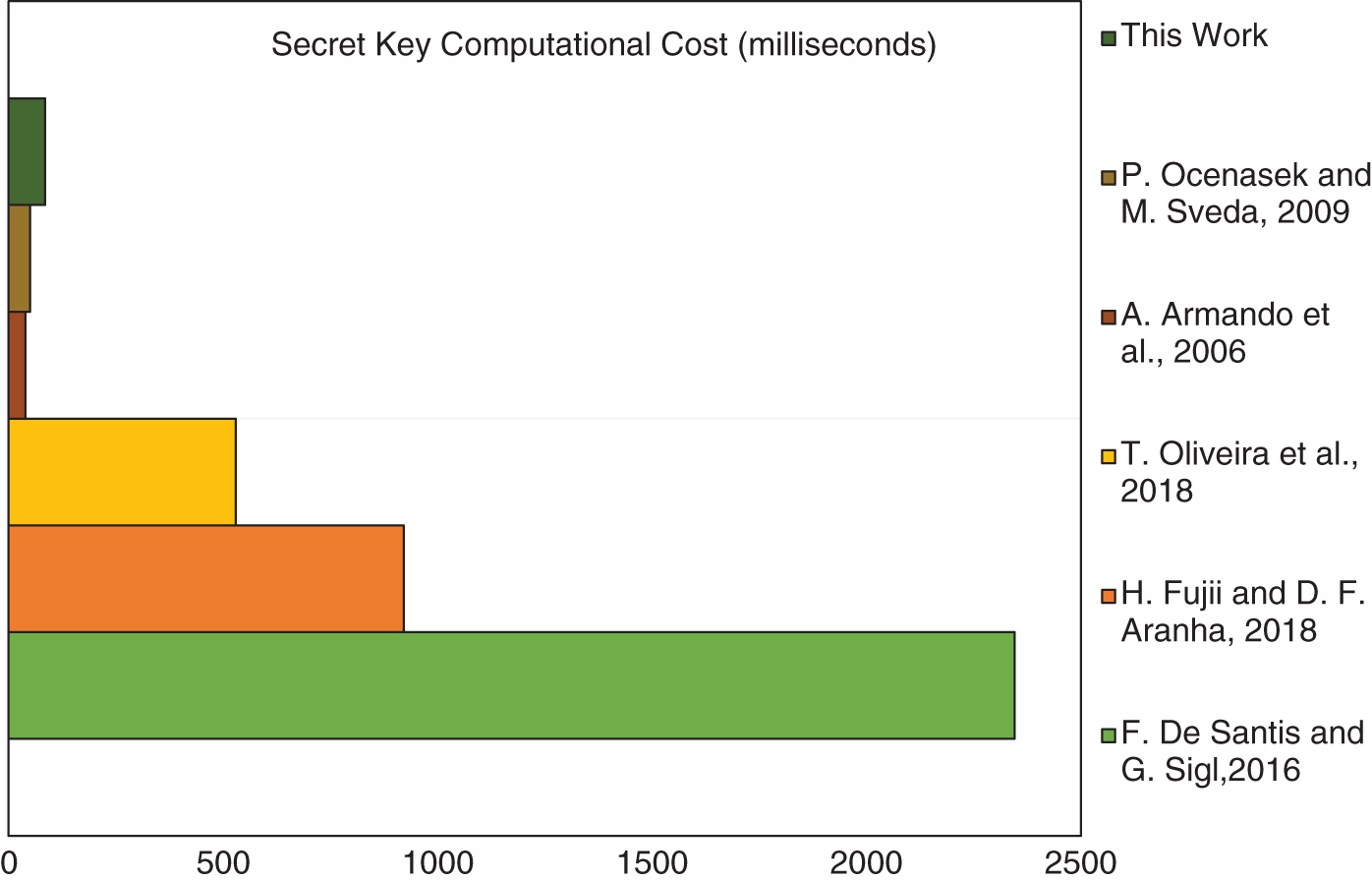
Figure 1: Elliptic curve based comparative secret key performance on similar IoT devices, References: De Santis et al., 2016 [28], Fujii et al., 2018 [29], Oliveira et al., 2018 [30], Armando et al., 2006 [31], Ocenasek et al., 2009 [32]
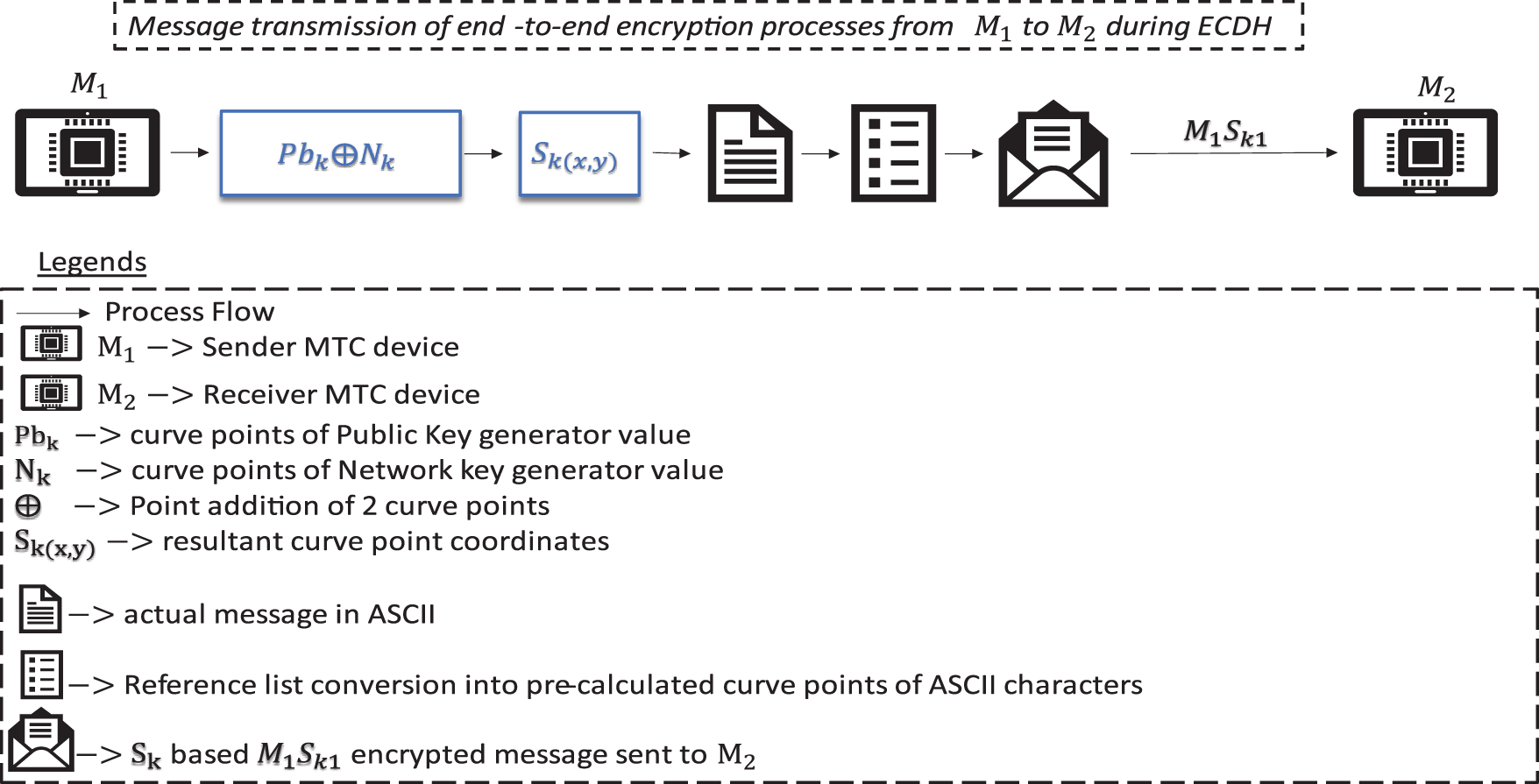
Figure 2: End-to-end encryption process of the proposed scheme
Through
3.3 Secret Key (SK) Generation
Secret key (SK) has a crucial role in the hash function that can be generated from two parts:
1) SK can be generated from ECDH key exchanging process.
2) SK can be formed by an integer through random number generator function (RNGF) with a seed input of a built-in timer in AVR in microseconds.
Table 2 shows secret key (SK) generated by ECDH key exchange procedures where the resulting keys are considered as generator values (G). The proposed technique’s execution cost is calculated using scalar multiplication and encryption process. In Table 2, encryption time (E.T) increases with large mod(p) values. Scalar multiplication calculates large curve points in ECC efficiently by converting the G value into bits. When the bit is 1, P.A is executed and P.D is executed if the bit is 0.

Because elliptic curve key generation requires a lot of work, it determines the cost of computing performance. Curve operations with a maximum size of 255 bits are performed on huge random prime numbers. Fixed-point multiplication, scaler multiplication, point addition, point doubling, multiplicative inverse, and verification are the several operations that make up curves. The two primary curve operations are point-addition and point-doubling, with other operations being their subsets. Fig. 1 compares the costs of our method with methods based on curve operations in Table 2 that used CPUs with higher processing power. The authors in [33], aimed to protect IoT systems from various security threats such as unauthorized access, data breaches, and impersonation attacks by enabling secure verification of identities between IoT devices and servers. The proposed solution employs efficient cryptographic techniques tailored for the resource constraints of IoT devices, ensuring both robust security and minimal computational overhead with an emphasis on side-channel attack defense. In [28], authors investigated the application of the X25519 elliptic curve Diffie-Hellman key exchange on ARM Cortex-M4 processors. The difficulty of securing cryptographic operations on devices with limited resources, such as the ARM Cortex-M4, which is frequently utilized in embedded systems and IoT applications, is discussed in the paper. In [29], a study aimed at enhancing the application of the Curve25519 elliptic curve on ARM microcontrollers was presented which are popular in embedded systems because of their efficiency and low power consumption. The authors suggest methods for improving cryptographic operations’ performance on these devices with limited resources, guaranteeing the effective execution of safe key exchange protocols. Authors in [30] explored pre-computation strategies, which can greatly improve the performance of cryptographic operations by lowering the computational load during execution. They also discussed methods for optimizing the computation of the Montgomery ladder, a technique widely used in elliptic curve cryptography for performing scalar multiplication securely and efficiently. Fig. 1 represents encryption time through a secret key based on the research presented in this section.
3.5 Pre-Calculated Ascii Characters’ Curve Points on Elliptic Curve
This technique is used to pre-calculate curve points for 46 ASCII characters consisting of characters a to z, 0 to 9, and 10 special characters. Other characters are excluded to pre-calculate minimize pre-calculation memory usage. This strategy requires approximately 20% storage in the program memory of IoT devices (for Arduino Mega 2560). Table 3 shows ASCII characters’ dedicated G values and their respective curve points.

These dedicated values are used for encryption by the hash function. Every ASCII character in Table 3 represents a long random prime integer as generator value (G). These generator values are then applied on ECC to find the respective curve points. These curve points are calculated before runtime to reduce runtime computation.
3.6 Lightweight Hash Function (
Lightweight hash function
Step 1:
1)
2)
Step 2:
3.7 Definition 1: Hash Function
String s containing ASCII characters
Fig. 3 illustrates the process of mutating curve points of five ASCII characters. Mutation process is performed as explained in Step 1 and Step 2.
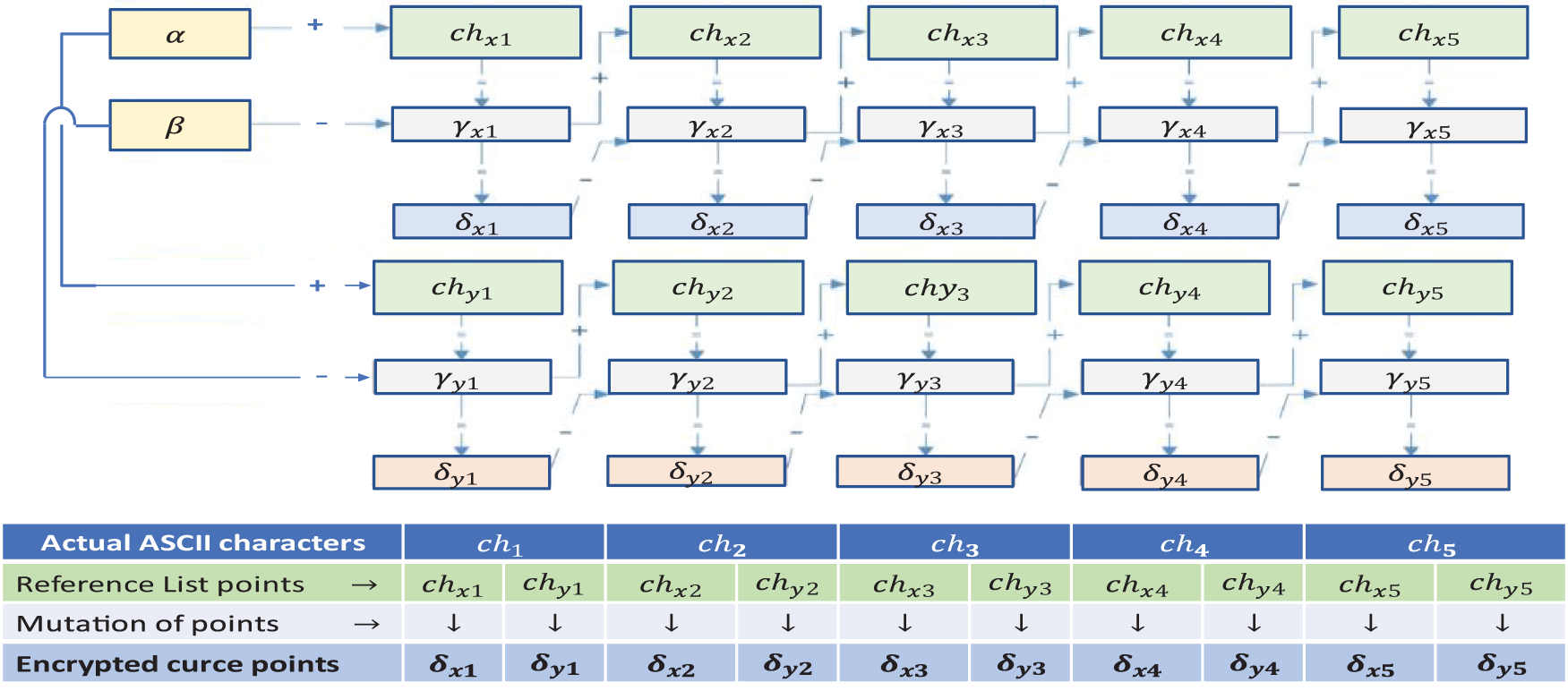
Figure 3: Lightweight hash function process of the proposed scheme
3.8 Authentication Key Agreeing through Novel Lightweight Hash Encryption (NLHE-AKA)
Mutual authentication process is an authentication frame (auth-frame) based authentication key agreeing (AKA) mechanism. Curve25519 is selected for overall elliptic curve encryption because of the speedy calculations during scaler multiplication that best suits the resource constrained devices (as discussed in Section 3.2). All devices in the network contain a unique uniform network identification number (
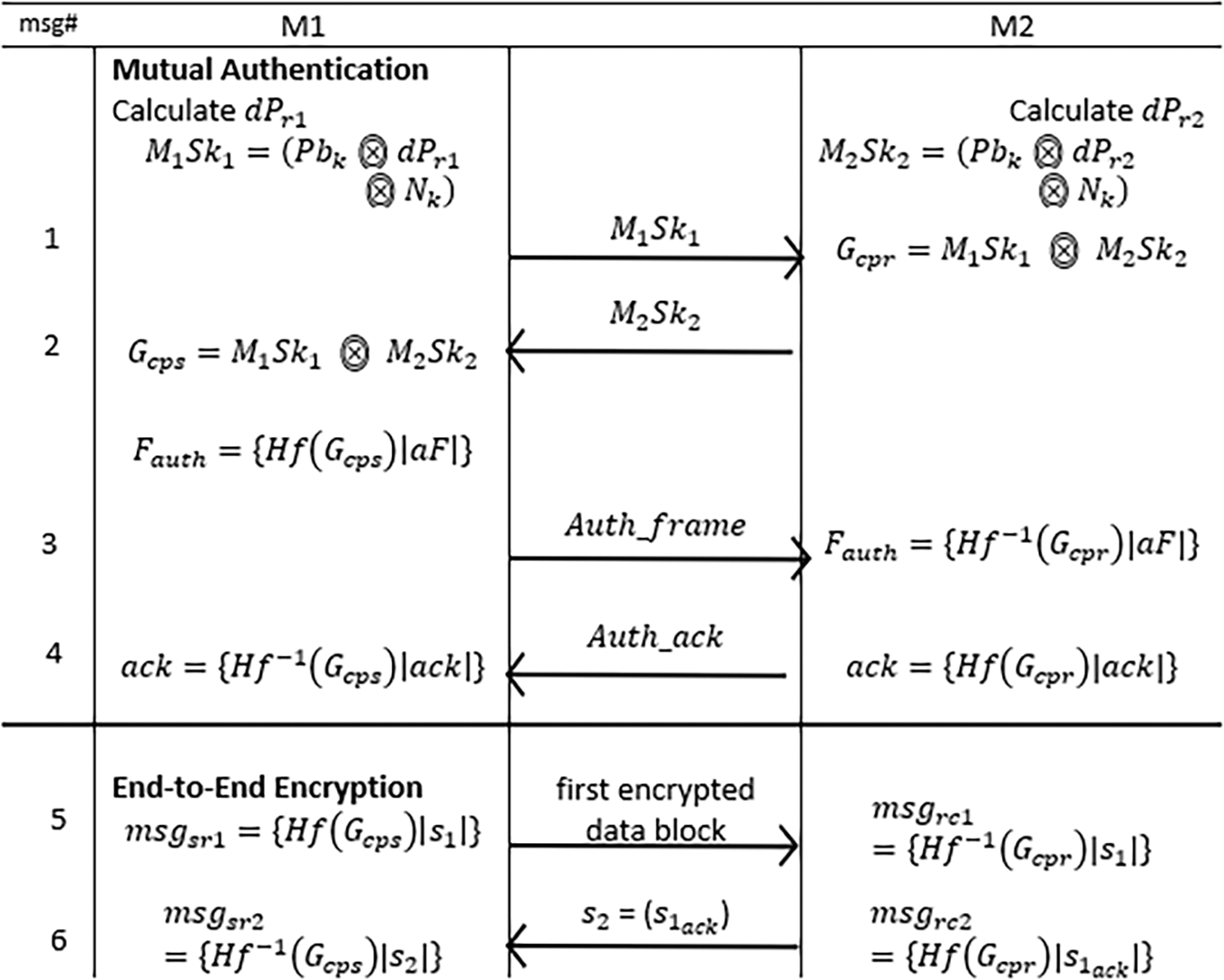
Figure 4: Proposed NLHE-mutual authentication process
Fig. 4 represents data flow of proposed NHLE-AKA based mutual authentication between
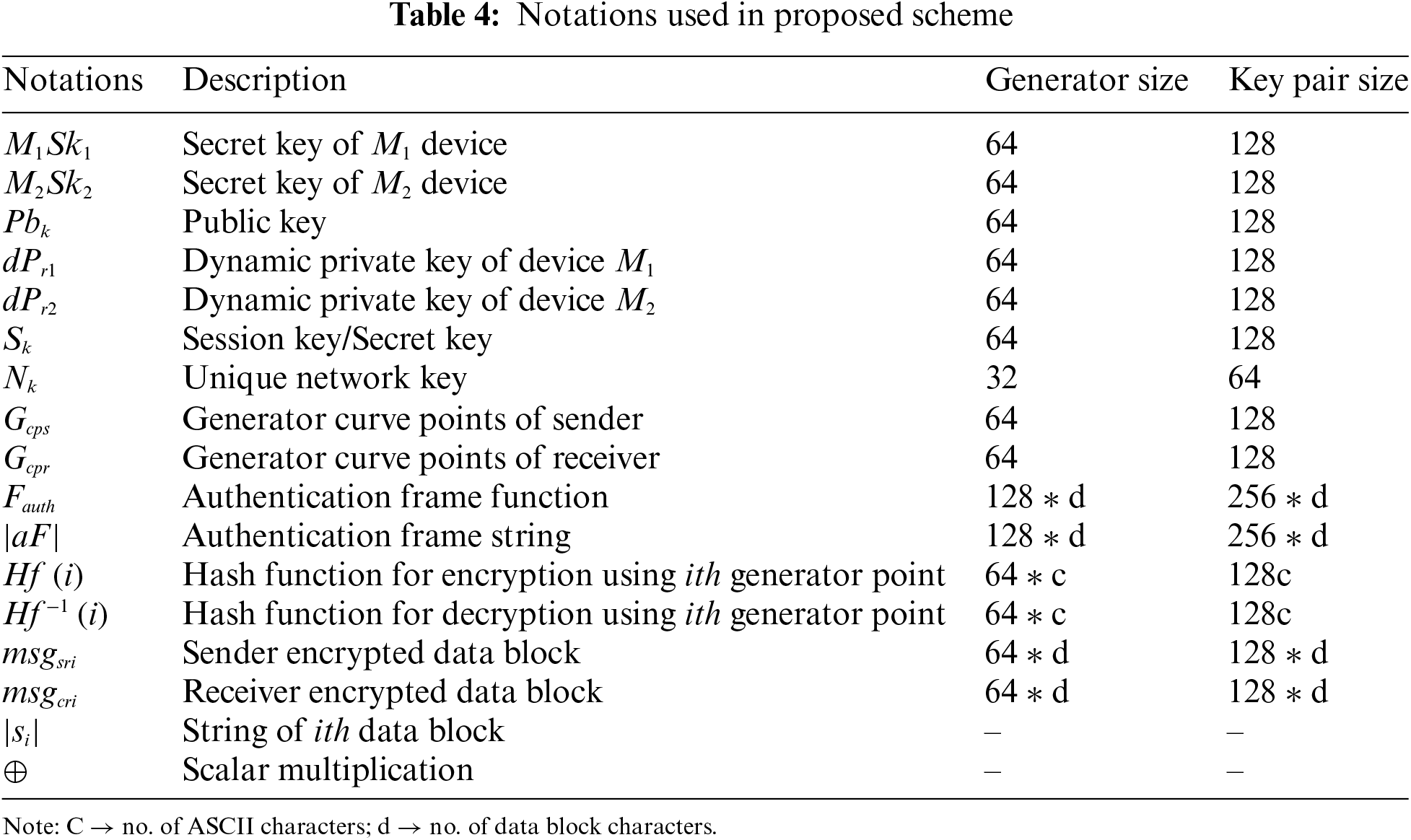
The following steps can elaborate the auth-frame based mutual authentication between sender
1) All communicating devices contain pre-shared keys i.e.,
2)
3)
4)
5)
6)
7) Both devices are considered authenticated after receiving and decrypting
8)
9)
This section describes security analysis of the proposed scheme in terms of threat modelling. The section also provides a summary of comparative analysis of security features in similar AKA schemes. The presented model needs to be analyzed in terms of security by devising a threat model. A comparative summary is presented in Table 5 with other similar authentication schemes. Fig. 4 shows the crucial variables and steps followed in the following threat models. Moreover, Features shown in Table 5 can be elaborated through the following scenarios.
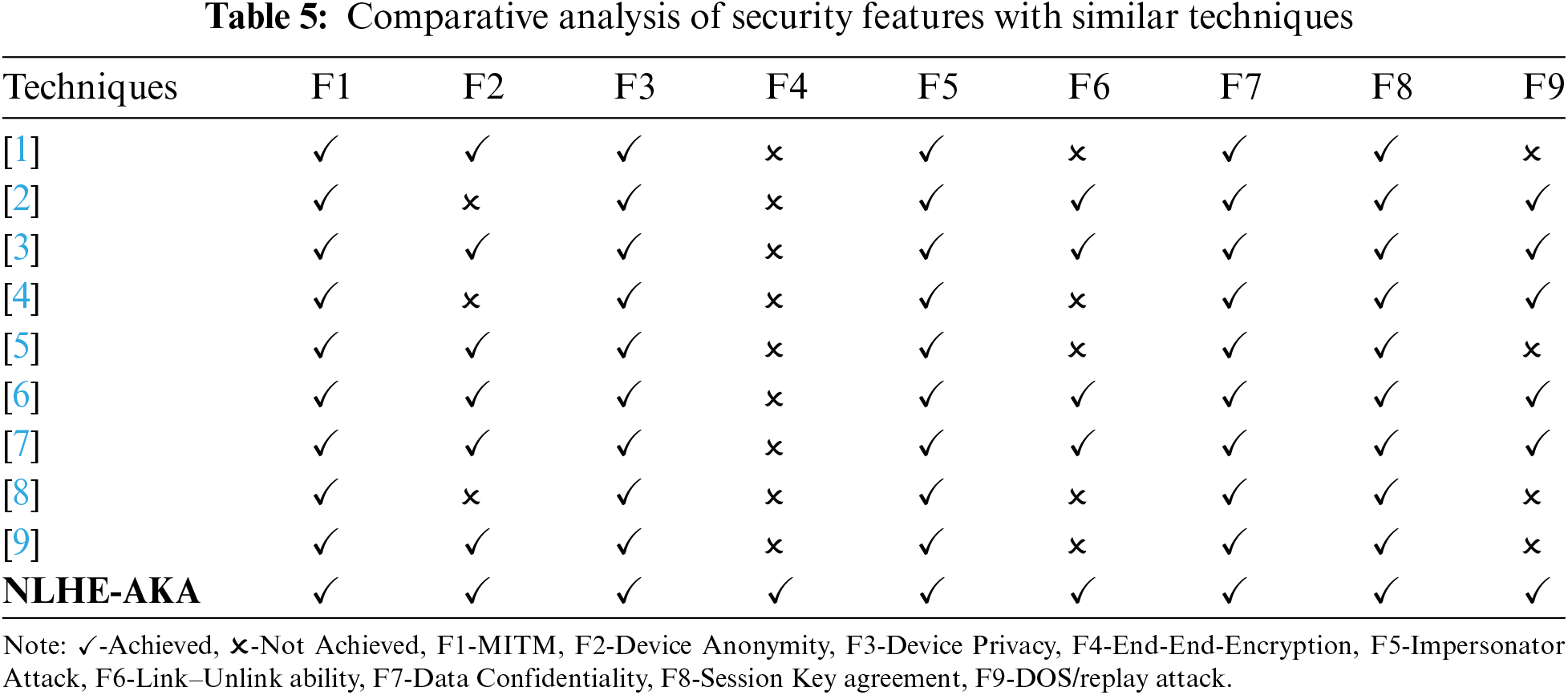
4.1 Impersonator Attack on
The attacker is in possession of
4.2 Impersonator Attack on
The attacker is in possession of
4.3 MiTM, Data Spoofing and Mutation
Attacker is consistently monitoring messages between
4.4 Device Anonymity and Privacy
The attacker tries to extract data from certain devices by successfully possessing an IoT device. Since the communication pattern of all devices (as shown in Fig. 1) is extremely precise, thus knowing only the pattern, will not allow the impersonator to extract the data or status of other devices despite providing full authorization over
To apply DOS/Replay attacks, the attacker must first connect the mutated device to the network. Attacker should also know set of parameters
The attacker attaches (links) a fake device to extract data and analyze message access code (MAC) pattern. As mentioned previously; to carry out such operation, the attacker must know the exact set of parameters
A comparative study of achieving various important security features discovered for M2M communication in a network, is shown in Table 5. The study reflects that existing AKA protocols for M2M communication lack in providing robust security and forfeit link-unlink ability during distinguishable sessions. It can also be observed from Table 5 that the proposed scheme contains ECC’s Curve25519 based end-to-end encryption that improves communication security. Furthermore, the scheme effectively prevents the known attacks in M2M communication networks.
This section represents the implementation and simulation results of the proposed scheme. Additionally, to analyze feasibility of the scheme, a comparative study of similar AKA techniques, is also presented in the following subsections. The technique is implemented by first generating ASCII curve points followed by generating secret keys to initial mutual authentication. The secret keys are also responsible for initiating the encryption process. The devices then mutually authenticate each other followed by encrypting the real message and sending it to a receiver device which then decrypts the message.
The proposed scheme is implemented on AVR Atmega2560, a resource-constrained IoT device. The device contains 8-bit @ 16-Mhz CPU capability with 4 Kbytes internal memory. In addition, the device’s power ratings are 5 V input with 20 mA current supply. AKA and end-to-end encryption techniques are implemented directly on the specified hardware. However, the networking performance is recorded in Contiki Cooja simulator by using an identical hardware known as SkyMote. In total, 9 different tests were conducted in dynamic topologies for 60 s where every node sends and receives approx. 60 packets.
5.2 GMP (GNU—Multi Precision Arithmetic Library)
The implementation of the proposed scheme on the specified hardware required arithmetic operations on large prime-signed integers, which AVR ATmega coding platforms do not support directly. Therefore, we adopted the GMP library that possesses an embedded support library (mini-GMP) for the AVR ATmega hardware family. The GMP library is freeware and applied mostly for multiple precision arithmetic on 32-to-64 bit signed integers and high precision floating points through fast and precision-capable algorithms. Its loops are partly coded in assembly language to deliver fast results. Additionally, the library works with GNU-gcc and C++ and C language platforms. We utilized version 6.2.0 equipped with a mini support library consuming minimum code size with limited functionality which is specially designed for resource constraint devices.
5.3 Secure & Performance-Efficient Curve Adoption
Choosing the right curve and
Contiki is a Linux-based OS specially designed for resource-constraint IoT devices in WSN. It includes a Cooja simulator which simulates nodes (IoT devices), providing platforms for networked, WSN, and 6LoWPAN types of networks. The platform offers monitoring of several node parameters such as transmission power, low power mode, packet delivery ratio, and routing protocols used in TCP/UDP-IP and sensory data for all nodes. It also provides overall network statistics and code-based node analyses which may contain a mixture of nodes. We used Contiki 2.7v which supports MSP430 and Atmel AVR microcontrollers. Fig. 5 offers an illustration of simulation in Contiki Cooja of the proposed scheme where network topology, historical and average power consumption and sensor map simulated data charts are illustrated.
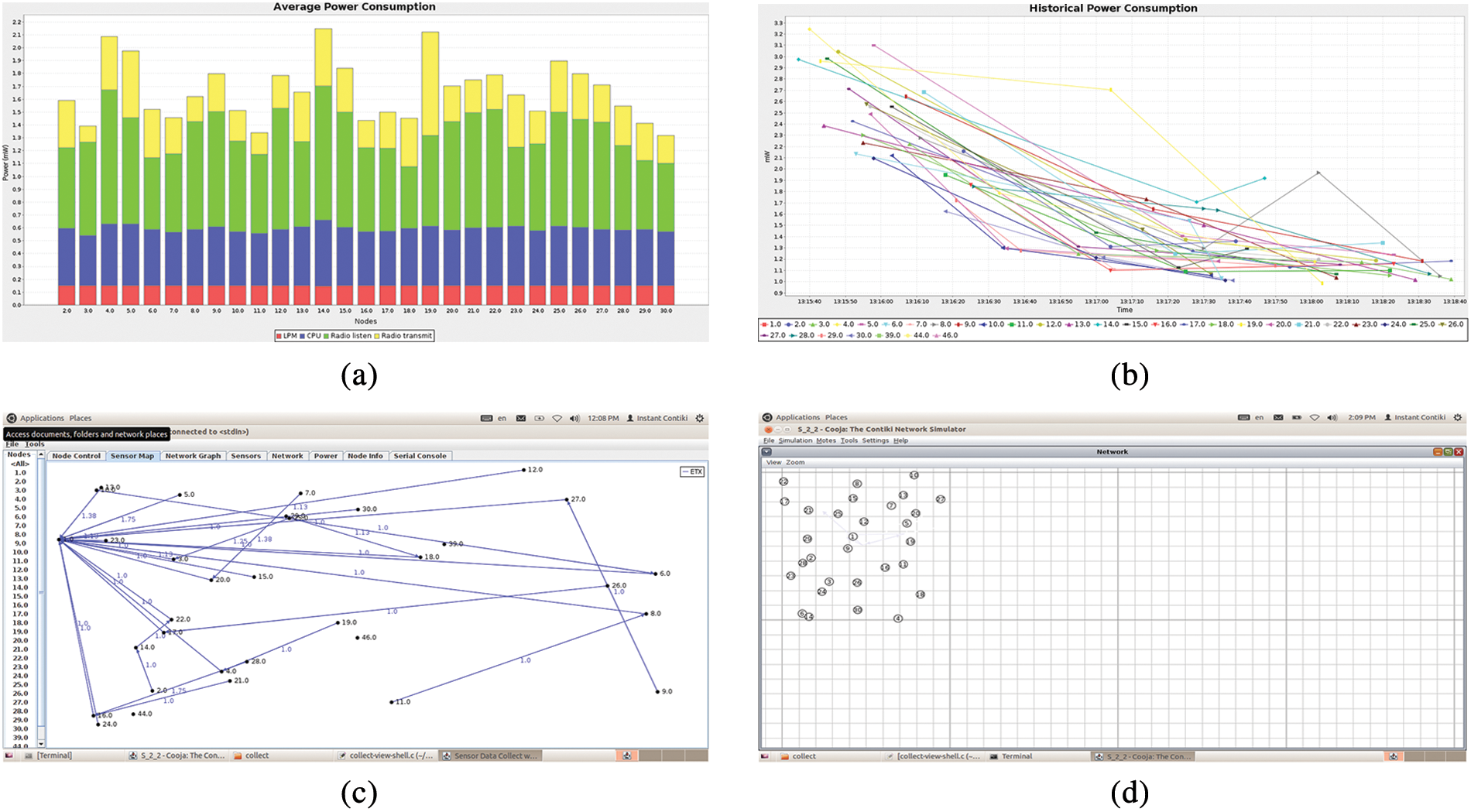
Figure 5: Contiki-Cooja simulation of the proposed scheme (a. average power consumption, b. historical power consumption, c. sensor map of communication with devices, d. dynamic topology of devices)
The Cooja provides predefined simulator library files for different types of communication protocols and resource constraint IoT devices. Collector-View is a similar sort of predefined simulator file that is used to collect information from nodes during simulation. Similarly, Cooja provides different types of nodes such as SkyMote with hardware specifications nearly identical to Atmel AVR microcontroller in a Collector-View simulation environment. The proposed simulation mimics WSN communication protocols containing 30 SkyMotes as illustrated in Fig. 5. The nodes execute program code separately for both
This section describes simulation performance of the proposed scheme. The performance is categorized in terms of computational and communication costs, as illustrated in Figs. 6 & 7. The results are based on 30 nodes in WSN environment with random node placements (random topology). Moreover, the simulation is tested on 9 different parameter values (3 different
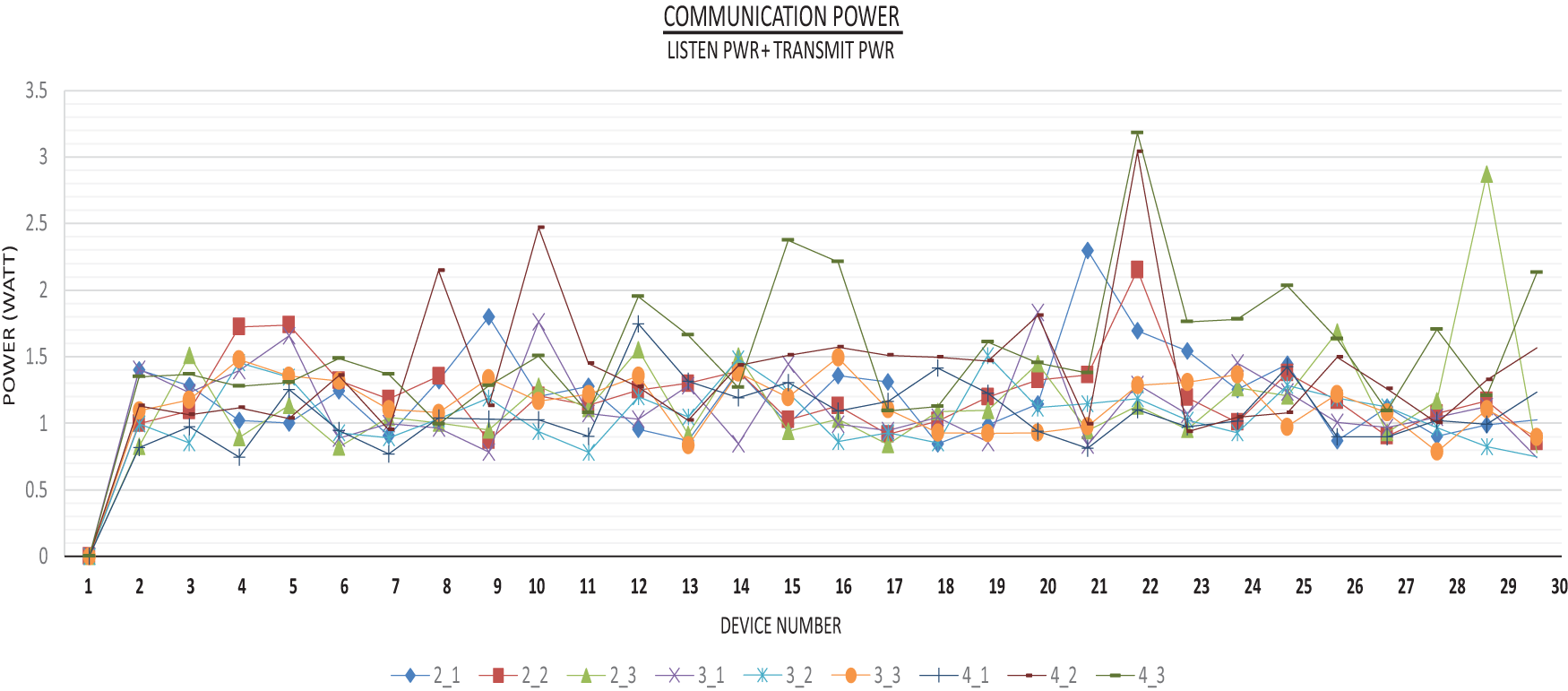
Figure 6: Communication cost performance of the proposed scheme

Figure 7: Computational power performance of the proposed scheme
5.4.3 Computational Power Consumption Performance
Development of the proposed scheme is motivated to best suit resource-constrained devices that mostly operate in remote areas under severe conditions and are battery-powered. IoT devices must maintain efficient power consumption to operate for longer hours. Thus, computation power performance depends on the remote operational efficiency of such devices. Power consumptions are further divided into CPU time (where CPU is used) and Low Power Mode time (LPM—where CPU waits, halts or goes to sleep if no task is being performed) to save battery power. Fig. 6 shows the results of the overall average computational power consumption (CPU + LPM) of all 9 simulation configurations. The results show that there is merely 100 mill-watt difference between
5.4.4 Communication Power Performance
To communicate seamlessly, the proposed scheme must exhibit decent communication performance. There are two types of modes in communication operations, a device consuming power during data transmitting is considered as transmit power and is considered as listen power during data retrieval.
Hence, transmit and listen power defines overall communication cost of the scheme in a network. Fig. 7 shows average communication cost of 30 nodes with 9 different
5.4.5 Comparative Analyzes of Communication Overhead
Comparative analysis in terms of communication overhead of the proposed scheme with similar AKA protocols in IoT communication is discussed in this section. These AKA protocols cover different types of networks such as group-based (used in 3GPP & LTE) and local (for LAN & WAN and LoraWAN) authentication protocols. The proposed scheme serves end-to-end encryption in IoT communication which can be applied on group-based, local, and hybrid networks. Consequently, the communication overhead is analyzed irrespective of network-related parameters. Table 6 represents a summary of communication costs during data transmission, comparing with similar authentication schemes. Every data block (msgx) represents communication cost in bits. The scheme consists of authentication protocols with similar patterns of message transmission processes for n nodes forming m groups. It can be elaborated from Table 7 that the proposed scheme costs the least overhead considering one successful AKA for 2 nodes (M1 & M2) with five data blocks (d = 5); d refers to
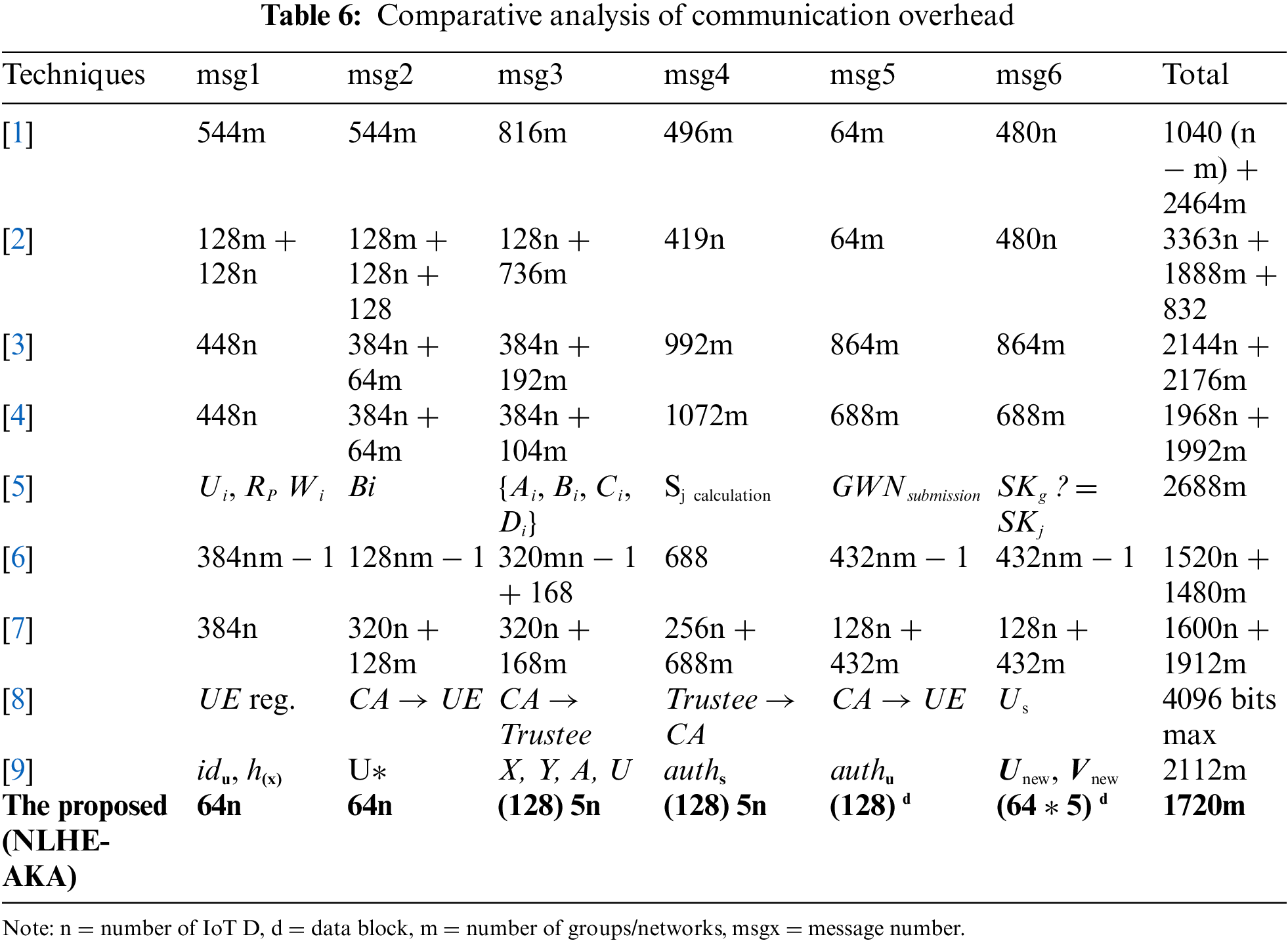
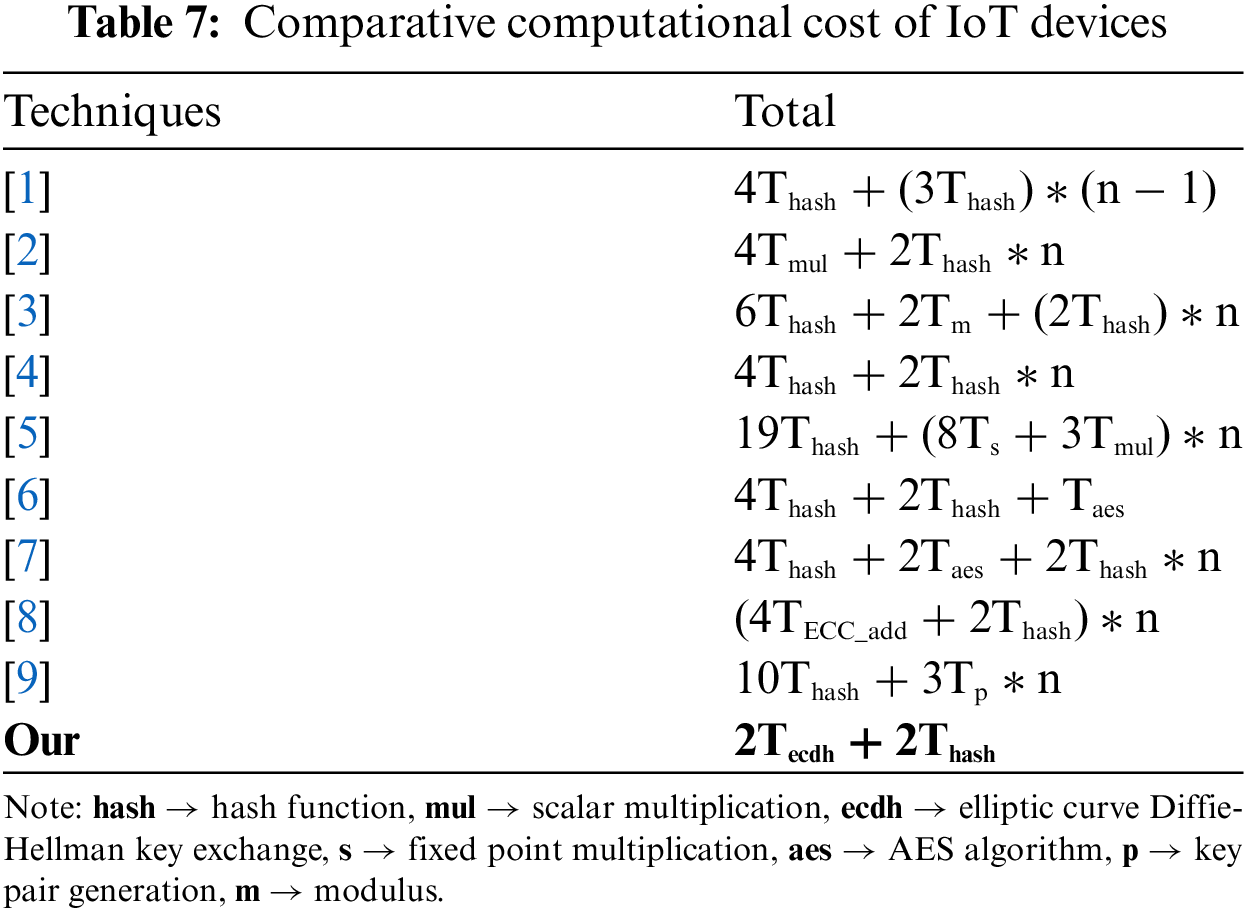

Figure 8: Communication overhead comparison with similar aka protocols (a) m = 1, (b) m = 50
5.4.6 Comparative Analysis of Computational Overhead
Computational evaluation on one IoT device can be done through Lagrange Time component (LT) [11]. The component assigns time cost values to cryptographic functions. In this section, we applied LT on the proposed hardware to evaluate time costs. The LT at hash function is (Thash = 0.75), scalar multiplication forming one key pair (Tecc_add = 0.5, Tp = 0.15 & Ts = 0.1), American encryption system AES at (Taes = 1) and ECDH based key exchange at (Tecdh = 0.5). The cost of Tecdh is comparatively higher than other ECC operations as key exchange operations can be costly if session key (SK) is large. Since we used
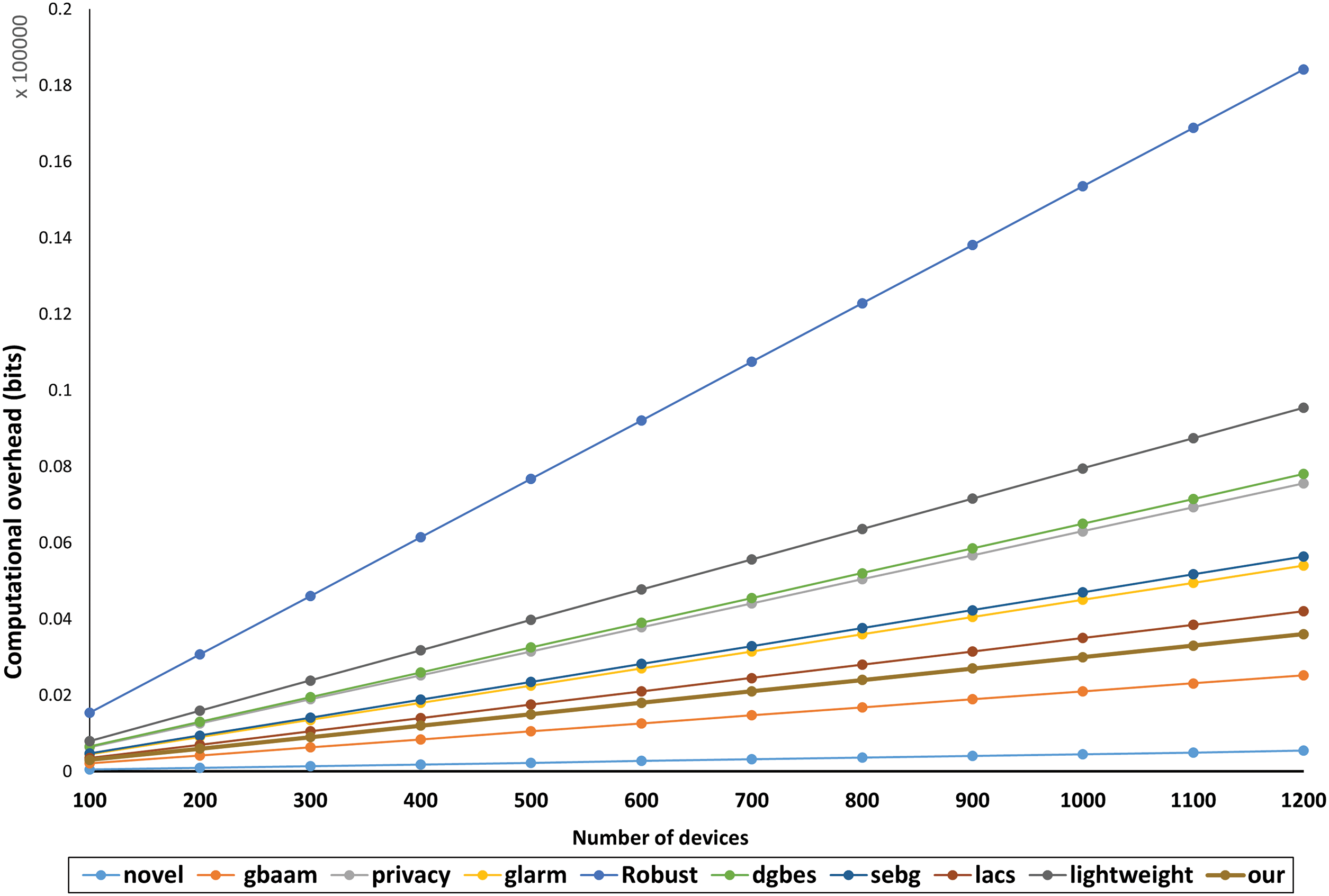
Figure 9: Comparison analysis of computational overhead of proposed scheme
The proposed scheme is only costly compared to GBAAM-and-Novel AKA protocol as they lack acquiring resilience against statistical and DOS/Replay type attacks, respectively.
5.4.7 Comparative Analysis of Storage Cost
Comparative study of storage cost analysis is presented in this section as shown in Table 8. It refers to minimum storage required by an IoT device as pre-requisite parameters to operate on certain protocols. In the proposed scheme, of
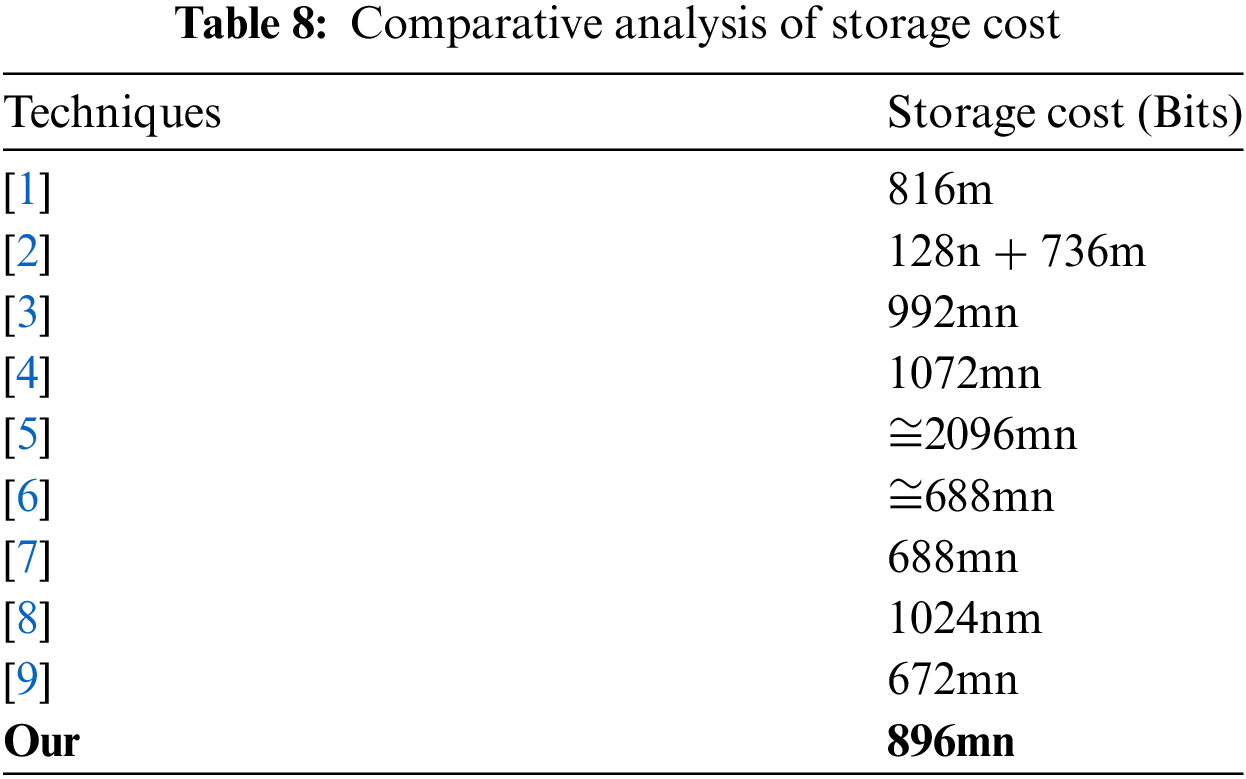
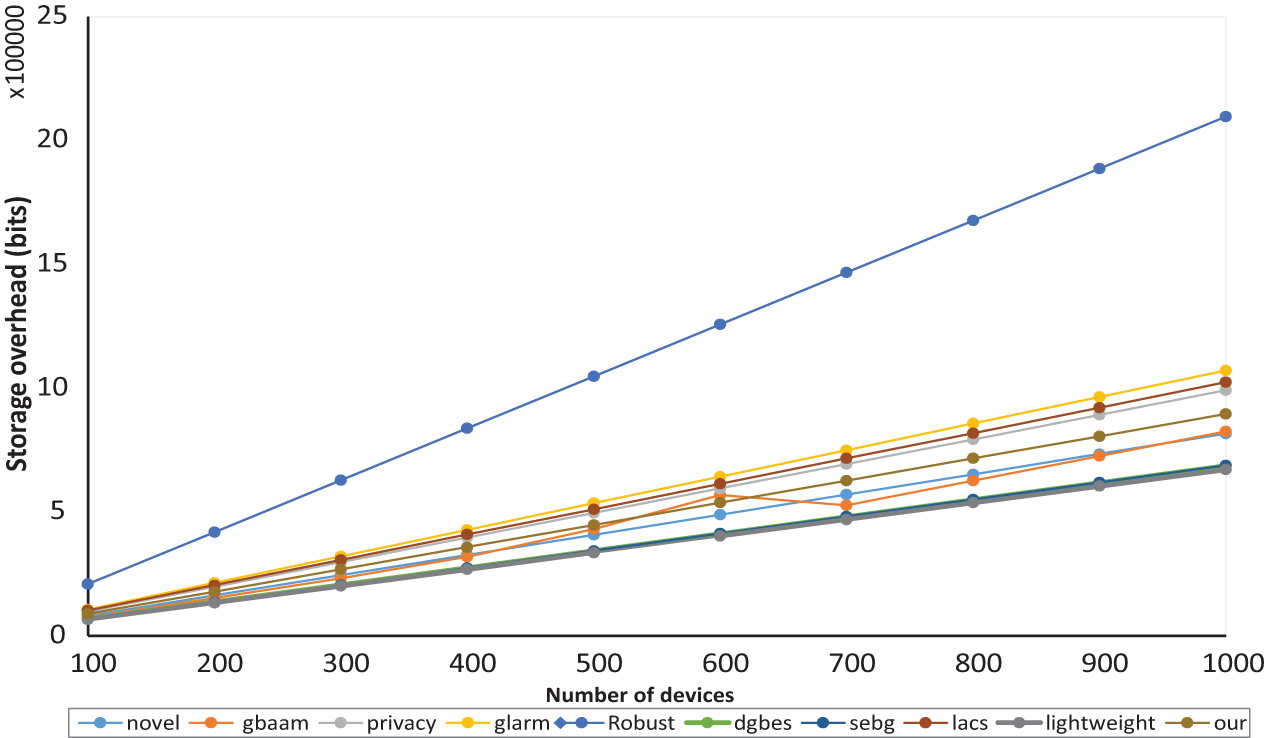
Figure 10: Storage overhead comparison of the proposed scheme with similar techniques in IoT communication
5.5 Formal Security Verification Using AVISPA
Automated validation of Internet security protocols and applications (AVISPA) is a popular tool [31] for formal security verification of cryptographic protocol in a Linux operating system. It uses the high-level protocol specification language (HLPSL) to model and simulate the presented mutual authentication protocol to verify the security properties. CompTIA advanced security (CAS+) description of the proposed protocol is first converted into Alice (as M1) and Bob (as M2) notation which is then applied as input to security protocol animator (SPAN) that simulates the protocol and converts it into HLPSL script. The HLPSL script is then forwarded as input to an intermediate format [32] (IF) translator to analyze it through backend verification models. AVISPA uses the proposed backends, on-the-fly model-checker (OFMC), constraint-logic-based attack searcher (CL-AtSe), satisfiability-based model-checker (SATMC) and tree automata based on automatic approximations for the analysis of security protocols (TA4SP), to verify the goals. Moreover, the proposed backend models execute the protocol via numerous finite iterations until the protocol is deemed safe for the number of sessions or an attack is discovered. We applied three attack models, i.e., OFMC, CLA-AtSe and TASP on the presented security protocol shown in Figs. 11a–c, respectively. It can be observed from the figures that the presented scheme is found safe during all three attack simulations. Additionally, Figs. 12a–c shows the security validation of incoming events (variables before authentication process), in-transit events (variables during the process), and past events (variables after mutual authentication process) of the proposed model.
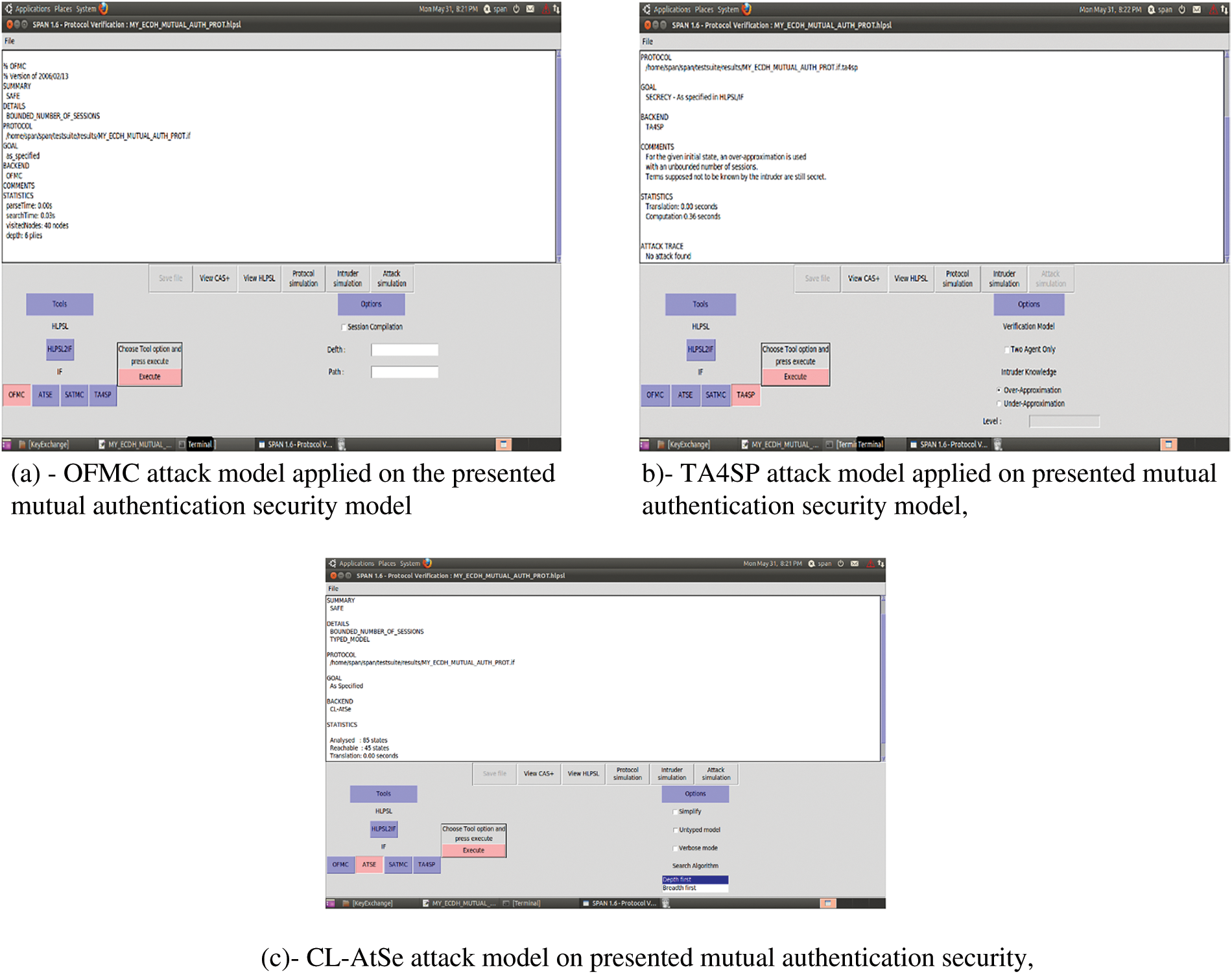
Figure 11: Format security verification model attacks on the proposed scheme (a): OFMC, (b): TA4SP, (c): CL-AtSe

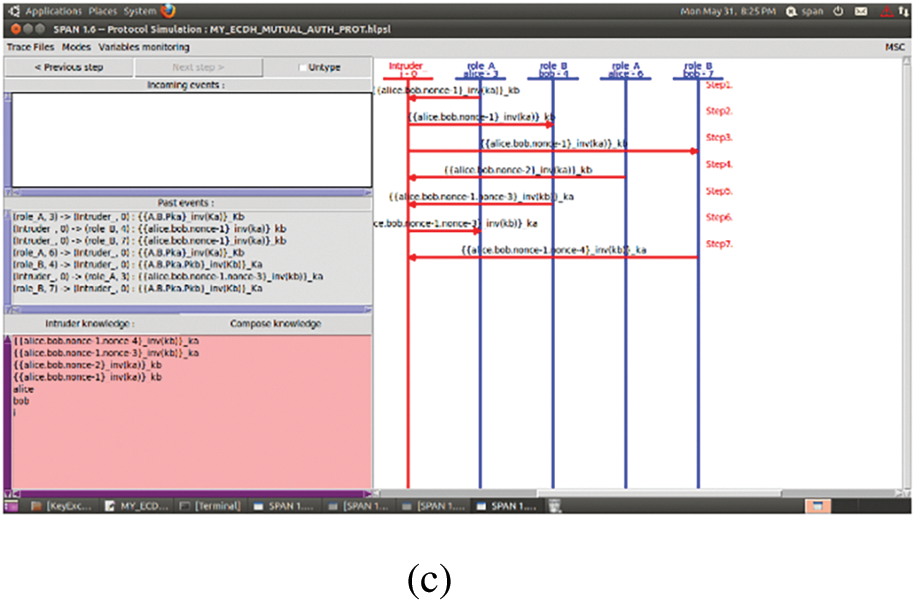
Figure 12: Formal security validation of mutual authentication events in the proposed protocol (a): incoming event, (b): in-transit event, (c): past event
6 Discussion and Future Directions
The proposed scheme successfully achieved lightweight end-to-end encryption which is a very crucial feature for perception layer security that emphasizes the integrity of data. Moreover, the scheme was able to encrypt and decrypt only limited ASCII characters to limit the usage of limited internal memory. Additionally, the scheme can be used in all sorts of communication protocols as it is designed irrespective of the type of communication system such as master-in-slave-out (MSIO), and master-out-slave-in (MOSI) configurations. Moreover, in this article, we acknowledge this trade-off by analyzing various mod(p) sizes affects encryption time. Greater security is achieved by increasing the complexity of cryptographic operations through larger mod(p) sizes at the cost of longer execution times (as shown in Table 2). On the other hand, smaller modulus sizes resulted in less computational overhead, which boosted performance but may jeopardize security. Selecting mod(p) values were experimented extensively with different sizes to manage the trade-off in practice, trying to find a compromise that provides enough security while preserving respectable performance levels. After several experiments, we determined the ideal configuration by considering both large and small values when choosing the mod(p) sizes (discussed in [5]). We intend to provide a more thorough examination of this balancing mechanism in subsequent work, including investigating adaptive approaches that dynamically modify the modulus size in accordance with the demands of the environment or application.
Since the scheme is specifically designed for resource constrained IoT devices that is why the scheme can only afford limited ASCII characters. The communication performance is not tested in large networks containing numerous nodes and networks where large amount of data is shared. However, the proposed scheme can withstand large networks with limited data blocks in a single session. The scheme provides a maximum of 192-bit curve security. The curve-point table values in Table 3 can be increased for stronger security provisions if required.
The proposed scheme allows many improvements for specific operations:
1. Introducing large mod(p) based pre-calculated curve points, as shown in Table 3 can result in stronger 256–512-bit curve security for more robust security.
2. The encrypted data blocks consist of ASCII characters only (as shown in Table 2). Data blocks in images, audio and video files can enlarge the scope of the scheme.
3. The scheme is limited to local authentication process for limited connectivity. Using the scheme in different authentication environments will enhance the capability of the scheme.
4. The scheme lacks communication support during power and communication failures in which case the whole communication terminates. Thus, adding data availability feature will improve robustness against power and communication failures.
5. The suggested method can be used and contrasted with current protocols because it is made to be energy-efficient for encryption and authentication procedures on devices with low power supplies.
6. Contiki simulator is used to capture networking performance in this article. Concrete measures in lossy IoT networks, like packet loss rates, throughput, and latency, can be further studied.
The article proposed an end-to-end encryption-enabled lightweight mutual authentication scheme with a lightweight hash function. The proposed scheme achieved known security features in the perception layer of IoT devices. Additionally, the performance analysis proves that the proposed scheme is comparatively more efficient in computation and communication than other similar techniques. Further, the scheme is especially designed for resource-constraint IoT devices to ensure maximum affordable security and performance in terms of less communication overhead, power consumption, internal memory, and cost of computation. For future work, potential improvements could include enhancing data availability in case of communication disruption, ensuring that devices can still authenticate in local authentication environment. Additionally, incorporating group-based and hybrid authentication methods could provide more robust security solutions. Exploring the use of larger size mod(p) values could further strengthen the cryptographic resilience of the scheme. These enhancements would contribute to a more resilient and versatile authentication framework suitable for a wider range of IoT applications.
Acknowledgement: The authors acknowledge that the research was not funded by any significant funding.
Funding Statement: This research did not receive any specific grant from funding agencies in the public, commercial, or not-for-profit sectors.
Author Contributions: Shafi Ullah conceptualized the study, designed the translation framework, and contributed to the simulation and coding; Haidawati Muhammad Nasir developed the algorithms and implemented the translation model; Akbar Khan collected and performed the encryption and decryption blocks analysis, ensuring its quality and relevance; Ahsanullah Memon conducted the user studies, gathered feedback, and evaluated the system’s performance in an IoT framework; Kushsairy Kadir contributed to the literature review, discussing related work; Shanila Azhar assisted in writing and revising the manuscript, ensuring clarity and coherence whereas Ilyas Khan and Muhammad Ashraf oversaw the project, supervised the team, and provided critical insights throughout the research process. All authors reviewed the results and approved the final version of the manuscript.
Availability of Data and Materials: No data or materials are available.
Ethics Approval: Not applicable.
Conflicts of Interest: The authors declare no conflicts of interest to report regarding the present study.
References
1. C. Lai, H. Li, X. Li, and J. Cao, “A novel group access authentication and key agreement protocol for machine-type communication,” Trans. Emerg. Telecomm. Technol., vol. 26, no. 3, pp. 414–431, 2015. doi: 10.1002/ett.2635. [Google Scholar] [CrossRef]
2. J. Cao, M. Ma, and H. Li, “GBAAM: Group-based access authentication for MTC in LTE networks,” Secur. Commun. Netw., vol. 8, no. 17, pp. 3282–3299, 2015. doi: 10.1002/sec.1252. [Google Scholar] [CrossRef]
3. A. Fu, J. Song, S. Li, G. Zhang, and Y. Zhang, “A privacy-preserving group authentication protocol for machine-type communication in LTE/LTE-A networks,” Secur. Commun. Netw., vol. 9, no. 13, pp. 2002–2014, 2016. doi: 10.1002/sec.1455. [Google Scholar] [CrossRef]
4. C. Lai, R. Lu, D. Zheng, H. Li, and X. S. Shen, “GLARM: Group-based lightweight authentication scheme for resource-constrained machine to machine communications,” Comput. Netw., vol. 99, no. 4, pp. 66–81, 2016. doi: 10.1016/j.comnet.2016.02.007. [Google Scholar] [CrossRef]
5. X. Li, J. Peng, J. Niu, F. Wu, J. Liao and K. -K. R. Choo, “A robust and energy efficient authentication protocol for industrial internet of things,” IEEE Internet Things J., vol. 5, no. 3, pp. 1606–1615, 2017. doi: 10.1109/JIOT.2017.2787800. [Google Scholar] [CrossRef]
6. S. Gupta, B. L. Parne, and N. S. Chaudhari, “DGBES: Dynamic group based efficient and secure authentication and key agreement protocol for MTC in LTE/LTE-A networks,” Wirel. Pers. Commun., vol. 98, no. 3, pp. 2867–2899, 2018. doi: 10.1007/s11277-017-5005-6. [Google Scholar] [CrossRef]
7. B. L. Parne, S. Gupta, and N. S. Chaudhari, “SEGB: Security enhanced group based AKA protocol for M2M communication in an IoT enabled LTE/LTE-A network,” IEEE Access, vol. 6, pp. 3668–3684, 2018. doi: 10.1109/ACCESS.2017.2788919. [Google Scholar] [CrossRef]
8. Y. H. Lin, J. J. Huang, C. I. Fan, and W. T. Chen, “Local authentication and access control scheme in M2M communications with computation offloading,” IEEE Internet Things J., vol. 5, no. 4, pp. 3209–3219, 2018. doi: 10.1109/JIOT.2018.2837163. [Google Scholar] [CrossRef]
9. M. F. Ayub, K. Mahmood, S. Kumari, and A. K. Sangaiah, “Lightweight authentication protocol for e-health clouds in IoT based applications through 5G technology,” Digit. Commun. Netw., vol. 7, no. 2, pp. 235–244, 2020. doi: 10.1016/j.dcan.2020.06.003. [Google Scholar] [CrossRef]
10. D. Choi, H. K. Choi, and S. Y. Lee, “A group-based security protocol for machine-type communications in LTE-advanced,” Wirel. Netw., vol. 21, no. 2, pp. 405–419, 2015. doi: 10.1007/s11276-014-0788-9. [Google Scholar] [CrossRef]
11. J. Li, M. Wen, and T. Zhang, “Group-based authentication and key agreement with dynamic policy updating for MTC in LTE-A networks,” IEEE Internet Things J., vol. 3, no. 3, pp. 408–417, 2016. doi: 10.1109/JIOT.2015.2495321. [Google Scholar] [CrossRef]
12. H. Wang and Q. Li, “Achieving distributed user access control in sensor networks,” Ad Hoc Netw., vol. 10, no. 3, pp. 272–283, 2012. doi: 10.1016/j.adhoc.2011.01.011. [Google Scholar] [CrossRef]
13. Y. Qiu and M. Ma, “A mutual authentication and key establishment scheme for M2M communication in 6LoWPAN networks,” IEEE Trans. Ind. Inform., vol. 12, no. 6, pp. 2074–2085, 2016. doi: 10.1109/TII.2016.2604681. [Google Scholar] [CrossRef]
14. S. Chen, M. Ma, and Z. Luo, “An authentication scheme with identity-based cryptography for M2M security in cyber-physical systems,” Secur. Commun. Netw., vol. 9, no. 10, pp. 1146–1157, 2016. doi: 10.1002/sec.1407. [Google Scholar] [CrossRef]
15. Q. Jiang, J. Ma, F. Wei, Y. Tian, J. Shen and Y. Yang, “An untraceable temporal-credential-based two-factor authentication scheme using ECC for wireless sensor networks,” J. Netw. Comput. Appl., vol. 76, no. 1, pp. 37–48, 2016. doi: 10.1016/j.jnca.2016.10.001. [Google Scholar] [CrossRef]
16. M. Saqib, B. Jasra, and A. H. Moon, “A lightweight three factor authentication framework for IoT based critical applications,” J. King Saud Univ.-Comput. Inf. Sci., vol. 34, no. 9, pp. 6925–6937, 2022. doi: 10.1016/j.jksuci.2021.07.023. [Google Scholar] [CrossRef]
17. M. Fakroon, M. Alshahrani, F. Gebali, and I. Traore, “Secure remote anonymous user authentication scheme for smart home environment,” Internet Things, vol. 9, no. 7, 2020, Art. no. 100158. doi: 10.1016/j.iot.2020.100158. [Google Scholar] [CrossRef]
18. S. Banerjee, V. Odelu, A. K. Das, S. Chattopadhyay, and Y. Park, “An efficient, anonymous and robust authentication scheme for smart home environments,” Sensors, vol. 20, no. 4, 2020, Art. no. 1215. doi: 10.3390/s20041215. [Google Scholar] [PubMed] [CrossRef]
19. D. He, S. Chan, and M. Guizani, “Accountable and privacy-enhanced access control in wireless sensor networks,” IEEE Trans. Wirel. Commun., vol. 14, no. 1, pp. 389–398, 2015. doi: 10.1109/TWC.2014.2347311. [Google Scholar] [CrossRef]
20. Y. Wu, L. Zhang, S. Berretti, and S. Wan, “Medical image encryption by content-aware dna computing for secure healthcare,” IEEE Trans. Ind. Inform., vol. 19, no. 2, pp. 2089–2098, 2022. doi: 10.1109/TII.2022.3194590. [Google Scholar] [CrossRef]
21. X. Li, S. Liu, S. Kumari, and C. -M. Chen, “PSAP-WSN: A provably secure authentication protocol for 5G-based wireless sensor networks,” Comput. Model. Eng. Sci., vol. 135, no. 1, pp. 711–732, 2023. doi: 10.32604/cmes.2022.022667. [Google Scholar] [CrossRef]
22. R. Melki, H. N. Noura, and A. Chehab, “Lightweight multi-factor mutual authentication protocol for IoT devices,” Int. J. Inf. Secur., vol. 19, no. 6, pp. 679–694, 2020. doi: 10.1007/s10207-019-00484-5. [Google Scholar] [CrossRef]
23. I. Alshawish and A. Al-Haj, “An efficient mutual authentication scheme for IoT systems,” J. Supercomput., vol. 78, no. 14, pp. 16056–16087, 2022. doi: 10.1007/s11227-022-04520-5. [Google Scholar] [CrossRef]
24. S. G. Oliver and T. Purusothaman, “Lightweight and secure mutual authentication scheme for IoT devices using CoAP protocol,” Comput. Syst. Sci. Eng., vol. 41, no. 2, pp. 767–780, 2022. [Google Scholar]
25. H. Nguyen, T. Hoang, and L. Tran, “Efficient hardware implementation of elliptic-curve diffie-hellman ephemeral on Curve25519,” Electronics, vol. 12, no. 21, 2023, Art. no. 4480. doi: 10.3390/electronics12214480. [Google Scholar] [CrossRef]
26. M. B. Niasar, R. El Khatib, R. Azarderakhsh, and M. Mozaffari-Kermani, “Fast, small, and area-time efficient architectures for key-exchange on Curve25519,” in 2020 IEEE 27th Symp. Comput. Arithmet. (ARITH), Portland, OR, USA, IEEE, 2020. pp. 72–79. [Google Scholar]
27. J. Chia, J. J. Chin, and S. C. Yip, “Evaluating pairing-free identity-based identification using curve25519,” in Advances in Cyber Security. ACeS 2020. Communications in Computer and Information Science, M. Anbar, N. Abdullah, S. Manickam, Editors, Singapore: Springer, 2021, vol. 1347, pp. 179–193. [Google Scholar]
28. F. De Santis and G. Sigl, “Towards side-channel protected X25519 on ARM Cortex-M4 processors,” in Proc. Softw. Perform. Enhan. Encrypt. Decrypt., Benchmark., Utrecht, The Netherlands, 2016, pp. 19–21. [Google Scholar]
29. H. Fujii and D. F. Aranha, “Efficient Curve25519 implementation for ARM microcontrollers,” in Anais Estendidos do XVIII Simpósio Brasileiro de Segurança da Informação e de Sistemas Computacionais, 2018, pp. 57–64. [Google Scholar]
30. T. Oliveira, J. López, H. Hışıl, A. Faz-Hernández, and F. Rodríguez-Henríquez, “How to (pre-) compute a ladder: Improving the performance of X25519 and X448,” in Selected Areas Cryptograp.-SAC 2017: 24th Int. Conf., Ottawa, ON, Canada, Springer, 2018, pp. 172–191. [Google Scholar]
31. A. Armando et al., “The AVISPA tool for the automated validation of internet security protocols and applications,” in Comput. Aided Verif. (CAV 2005), 2005, pp. 281–285. [Google Scholar]
32. P. Ocenasek and M. Sveda, “AVISPA: Towards practical verification of communication properties,” IFAC Proc, vol. 42, no. 1, pp. 153–156, 2009. doi: 10.3182/20090210-3-CZ-4002.00032. [Google Scholar] [CrossRef]
33. P. K. Panda and S. Chattopadhyay, “A secure mutual authentication protocol for IoT environment,” J. Reliab. Intell. Environ., vol. 6, no. 2, pp. 79–94, 2020. doi: 10.1007/s40860-020-00098-y. [Google Scholar] [CrossRef]
34. T. Lange, “SafeCurves: Choosing safe curves for elliptic-curve cryptography,” 2014. Accessed: Sep. 12, 2024. [Online]. Available: https://safecurves.cr.yp.to [Google Scholar]
Cite This Article
 Copyright © 2025 The Author(s). Published by Tech Science Press.
Copyright © 2025 The Author(s). Published by Tech Science Press.This work is licensed under a Creative Commons Attribution 4.0 International License , which permits unrestricted use, distribution, and reproduction in any medium, provided the original work is properly cited.


 Submit a Paper
Submit a Paper Propose a Special lssue
Propose a Special lssue View Full Text
View Full Text Download PDF
Download PDF
 Downloads
Downloads
 Citation Tools
Citation Tools